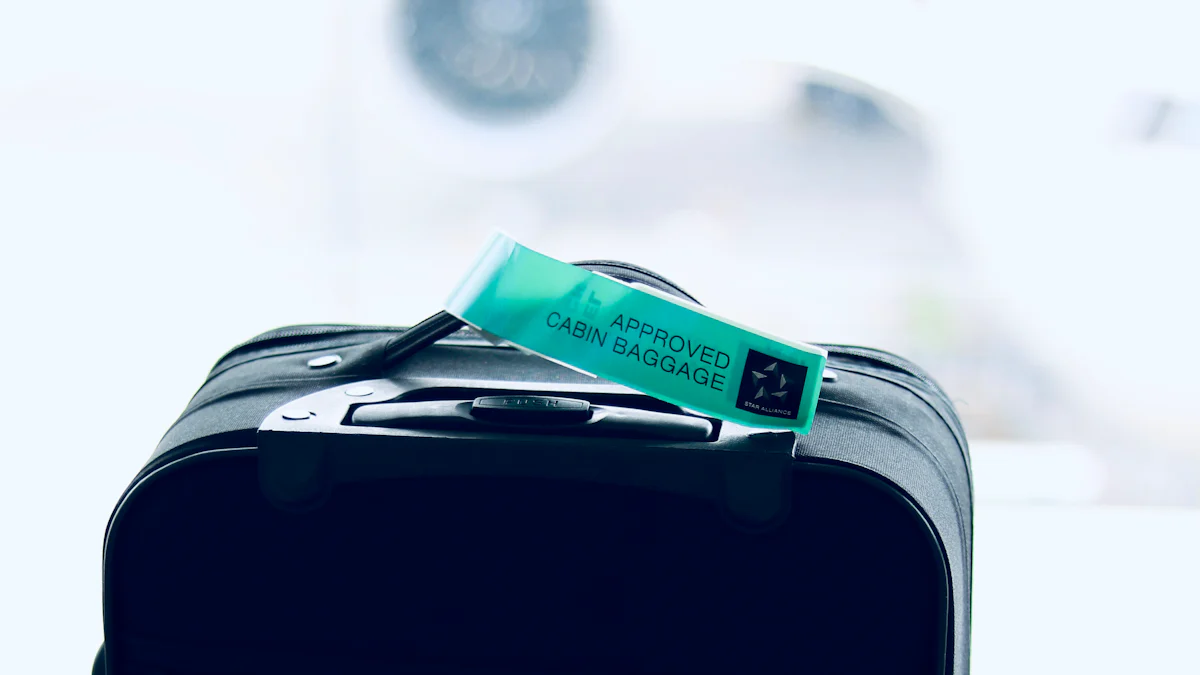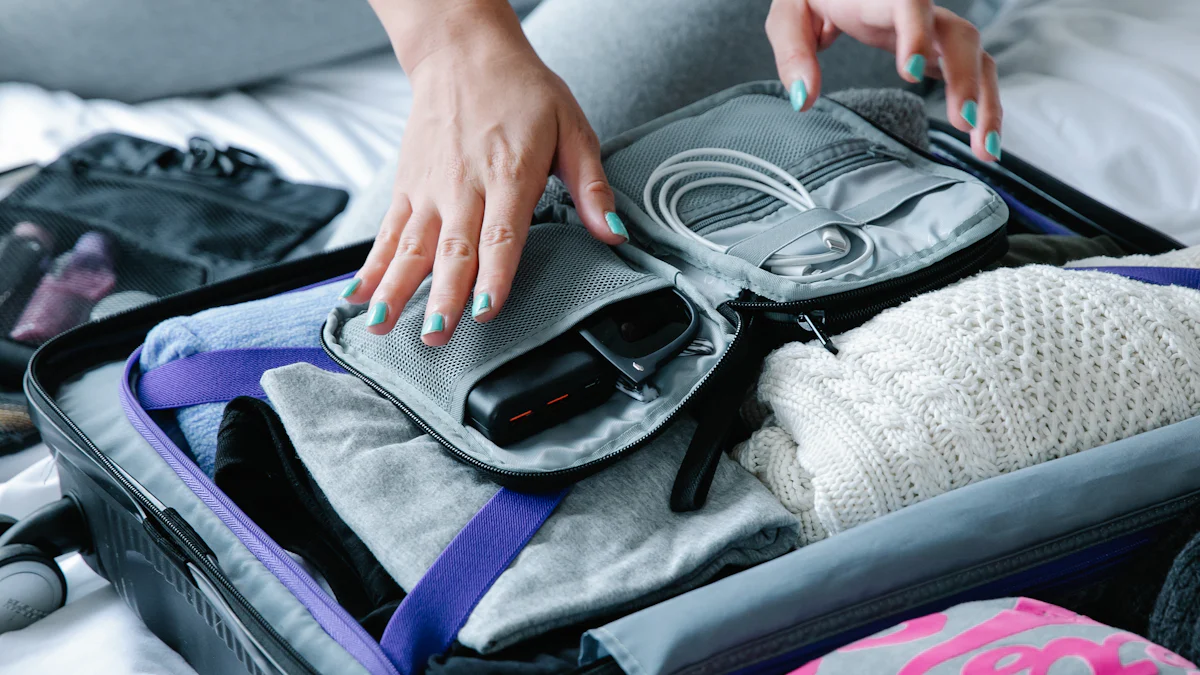
What are the similarities and differences in the regulations for carrying travel transformers among different airlines?
Share
Carrying travel transformers varies among different airlines, so if you plan to travel abroad, be sure to read this article to avoid carefully prepared items being confiscated at the airport during security checks.
Friendly reminder:
All DOACE travel adapters can be brought on the plane, so there's no need to worry about it. The rules of airlines are mostly formulated around fire or other safety hazards, and the main culprit causing fires in the air is lithium batteries in electronic products. All of DOACE's travel adapters rely on their own circuit design to work, without the need for additional power resources, so you can use them with confidence.
General Rules for Carrying Travel Converters

Safety Concerns and Restrictions
Fire hazards and lithium battery considerations
Airlines prioritize safety when it comes to electronic devices. Lithium-ion batteries, commonly found in travel converters, can pose fire risks if damaged or improperly charged. For this reason, most airlines restrict these batteries from being placed in checked luggage. Keeping your travel converter in your carry-on bag ensures it remains within reach and reduces the risk of incidents during the flight. Always check the battery specifications of your device to confirm compliance with airline safety standards.
Wattage and voltage limits for travel converters
Travel converters come with specific wattage and voltage ratings. Airlines often impose limits to prevent electrical malfunctions during flights. Devices exceeding these limits may not be allowed on board. Before traveling, verify the wattage and voltage of your travel converter and ensure it aligns with the airline's guidelines. Proper labeling on the device can also help avoid confusion during security checks.
Carry-On vs. Checked Luggage
Why carry-on is often preferred for electronic devices
Carrying your travel converter in your carry-on luggage offers several advantages. You can access it throughout the flight, and it remains protected from rough handling. Checked luggage often undergoes heavy processing, increasing the risk of physical damage to fragile electronics. Additionally, theft and loss of luggage are concerns when storing valuable items like travel converters in checked bags. The TSA recommends keeping electronics in carry-on luggage for easier inspection and safety.
Restrictions on checked luggage for certain items
Airlines impose strict rules on what can go in checked luggage. Lithium batteries, for example, are restricted due to their fire hazard potential. If you must place a travel converter in checked luggage, ensure it is properly packed to prevent damage. Some airlines may require you to remove the battery or follow specific packing instructions. Always review the airline's policies to avoid complications.
Universal Airline Guidelines
Compliance with international aviation safety standards
Airlines follow international safety standards to ensure passenger security. Organizations like the International Air Transport Association (IATA) and the International Civil Aviation Organization (ICAO) set these guidelines.
| Organization | Role |
|---|---|
| IATA | Defines standards for airline operations, including safety, ticketing, baggage handling, and cargo transportation. |
| ICAO | A UN agency that helps countries align their national aviation regulations, focusing on safety, security, and environmental protection. |
These standards emphasize the safe handling of electronic devices, especially those with lithium-ion batteries. Following these rules ensures a safer travel experience for everyone.
Importance of labeling and packaging travel converters
Proper labeling and packaging of your travel converter can make the security process smoother. Labels indicating wattage and voltage help security personnel quickly verify compliance. Use protective cases or padding to prevent damage during transit. A well-packaged device not only ensures safety but also reduces the chances of delays at security checkpoints.
Differences in Airline Regulations

Regional Variations
North American airlines and their specific policies
North American airlines often follow standardized safety protocols. Most airlines in this region allow you to carry travel converters in your carry-on luggage. However, they may require you to remove the device during security checks for inspection. Airlines like Delta and American Airlines emphasize compliance with TSA guidelines, which include restrictions on lithium batteries. Always check the airline’s website for specific details before your trip.
European airlines and stricter safety measures
European airlines tend to enforce stricter safety measures. Many carriers in this region impose tighter restrictions on the wattage and voltage of electronic devices. For example, some airlines may not allow travel converters exceeding a certain wattage in either carry-on or checked luggage. You should also expect more thorough inspections at security checkpoints. Preparing your travel converter with proper labeling can help you avoid delays.
Asian airlines and unique regional considerations
Asian airlines often have unique policies influenced by regional safety standards. Some carriers may require you to declare electronic devices like travel converters at check-in. Others might limit the number of electronic items you can carry. Airlines such as Singapore Airlines and ANA prioritize passenger safety by closely monitoring devices with lithium batteries. Researching the specific airline’s rules can help you stay prepared.
Budget Airlines vs. Premium Airlines
Budget airlines and stricter carry-on weight limits
Budget airlines often enforce stricter carry-on weight limits, which can impact travelers carrying electronic devices. The increasing need for personal electronics has led to heavier baggage. However, stricter weight limits can cause dissatisfaction among passengers.
| Evidence Type | Description |
|---|---|
| Increased Baggage Weight | The average baggage weight has steadily climbed, indicating travelers are carrying more devices. |
| Changing Travel Habits | The trend towards bulkier baggage reflects the increasing need for personal electronic devices. |
| Impact on Satisfaction | Stricter limits may lead to dissatisfaction among passengers who prefer lenient baggage rules. |
If you plan to fly with a budget airline, pack your travel converter efficiently to stay within the weight limits.
Premium airlines and more lenient policies for electronics
Premium airlines often provide more flexibility for carrying electronic devices. These airlines usually allow higher carry-on weight limits, making it easier for you to bring items like travel converters. Additionally, premium carriers may offer better customer service to address any concerns about electronic devices. Choosing a premium airline can reduce the stress of managing your luggage.
Airline-Specific Policies
Examples of policies from major airlines (e.g., Delta, Emirates, Ryanair)
Major airlines have distinct policies regarding electronic devices. Delta Airlines allows travel converters in carry-on luggage but requires compliance with TSA guidelines. Emirates Airlines emphasizes proper packaging and labeling for electronic devices. Ryanair, a budget airline, enforces strict weight limits and may require you to pay extra for heavier carry-ons. Understanding these differences can help you plan better.
How to find airline-specific guidelines online
You can find airline-specific guidelines on their official websites. Most airlines provide detailed information under their "Baggage" or "Travel Information" sections. If you have questions, contact the airline’s customer service for clarification. Staying informed ensures a smoother travel experience.
Practical Advice for Travelers
Checking Airline Policies Before Traveling
Where to find information on airline websites
Before you pack your travel converter, visit the airline's official website. Most airlines provide detailed baggage guidelines under sections like "Travel Information" or "Baggage Policies." These pages often include specific rules about electronic devices, including wattage limits and battery restrictions. Bookmark these pages for quick reference. If you’re flying internationally, check both the departure and destination airlines’ policies to avoid surprises.
Contacting customer service for clarification
If you can’t find clear answers online, reach out to the airline’s customer service. Use their phone number, email, or live chat options to ask specific questions about carrying a travel converter. Be ready to provide details about your device, such as its wattage and battery type. Customer service representatives can confirm whether your device complies with their regulations, saving you time and stress at the airport.
Preparing Travel Converters for Air Travel
Proper packaging to prevent damage
Pack your travel converter securely to protect it from damage during transit. Use a padded case or wrap it in bubble wrap to cushion it against impacts. Place it in a dedicated compartment in your carry-on bag to keep it safe from other items. Proper packaging not only prevents physical damage but also ensures your device remains functional throughout your trip.
Ensuring compliance with wattage and voltage limits
Check your travel converter’s wattage and voltage ratings before your flight. Compare these specifications with the airline’s guidelines to ensure compliance. If your device exceeds the limits, consider purchasing a smaller, travel-friendly converter. Labeling your device with its wattage and voltage can also help security personnel verify its safety quickly.
Tips for Smooth Security Checks
Declaring electronic devices at security checkpoints
When you reach the security checkpoint, declare your travel converter along with other electronic devices. Place it in a separate bin for screening, as required by most airport security protocols. This step speeds up the inspection process and reduces the risk of delays.
Keeping travel converters easily accessible in carry-on luggage
Store your travel converter in an easily accessible part of your carry-on bag. This makes it simple to retrieve during security checks or while on the plane.
- Easy access allows you to charge devices during the flight if needed.
- Security personnel may ask you to remove the adapter for inspection, and quick access simplifies this process.
By keeping your travel converter within reach, you can avoid unnecessary hassle and ensure a smoother travel experience.
Airline regulations for travel converters focus on safety but differ based on region and airline type. You should always review the specific policies of your airline before packing. This ensures your device complies with wattage and battery restrictions.
Tip: Bookmark the airline’s baggage policy page or contact customer service for clarity.
Proper preparation, like secure packaging and labeling, helps you avoid delays at security checkpoints. By staying informed and organized, you can travel confidently and enjoy a hassle-free journey. ✈️
FAQ
What is the safest way to pack a travel converter?
Place your travel converter in a padded case or wrap it in bubble wrap. Store it in your carry-on bag to protect it from damage. Avoid packing it with heavy or sharp objects that could harm the device during transit.
Can you carry multiple travel converters on a flight?
Yes, most airlines allow you to carry multiple travel converters. However, check the airline’s policies for any restrictions on the number of electronic devices or their wattage limits. Declaring all devices at security checkpoints can help avoid delays.
Are travel converters allowed in checked luggage?
Airlines generally discourage placing travel converters in checked luggage due to safety concerns. Lithium batteries, if present, pose fire risks. If you must pack one in checked luggage, ensure it is properly secured and meets the airline’s safety guidelines.
Do airlines charge extra for carrying a travel converter?
No, airlines typically do not charge extra for carrying a travel converter. However, budget airlines may enforce strict carry-on weight limits. Ensure your luggage stays within the allowed weight to avoid additional fees.
How can you verify if your travel converter complies with airline rules?
Check the wattage and voltage ratings on your travel converter. Compare these with the airline’s guidelines available on their website. If unsure, contact customer service for clarification before your trip.
